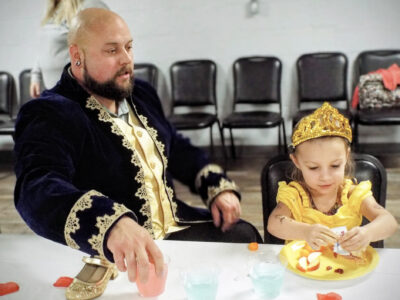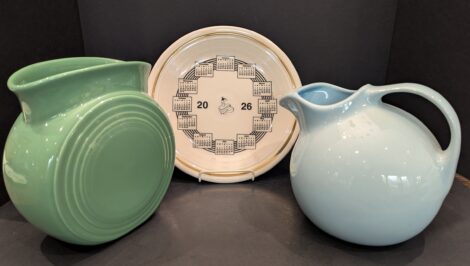‘A rickety old chair’
The purpose of this column is to relate three stories for which there was not space in the three-part nosebleed on Chris Crain’s book, “From East Liverpool to California, the Riches to Rags Story of the Taylor Family.”
The series ran last week in The Review. I can call it a nosebleed because I wrote it, and realize that’s what it probably is to those who, like my wife, are not smitten by local pottery history. I loved “Riches to Rags” because it is a story of hubris and loss, the fall of a family who saved themselves, real people, local people, who stuck together with the glue of faith, loyalty, hard work, selfless love, and always, humor.
When Chris made his first-ever trip from California to East Liverpool in 1995, it was at the invitation of Denver and Nancy Wetzel, a result of his chancing upon a little want ad for KT&K ware that Denver had placed in a pottery collectors’ news sheet.
The first story concerns discovering the history of a rickety old wooden chair that Burchfield Cartwright rescued from a burn pile around 1925, when he was about 10 years old.
Chris’ great-grandfather was Homer J. Taylor, who became president of Knowles, Taylor and Knowles in 1914 upon the death of his father, Col. John N. Taylor, a Civil War veteran and an original partner in KT&K. Homer was an avid amateur photographer.
On that first visit to East Liverpool in 1995 Chris Crain brought old albums of Homer’s family photos and memorabilia. Leafing through them Burch suddenly exclaimed, “I have that chair!” A photo showed old Col. Taylor leaning back in the chair, distinctive because of an attached footrest which could be folded underneath. Up until that moment, all the chair had meant to Burch was its clever design and connection to his boyhood.
Burch had recently sent the chair to be restored. He fetched it back and, Chris wrote, “invited me and Nancy Wetzel over to try it out.”
As a dumpster-diver and trash-picker myself, I fully relate to what Burch did. It was a very hoopie thing to do, and you see what joy it brought many years later.
The second story is about East Liverpool Atty. Wm. H. Vodrey’s 1941 solicitation of Marcus Aaron, president of Homer Laughlin China, and several other wealthy local men, to provide a gift of $4,000 to buy the property in Burbank, Calif., and the former chicken coops thereon which the Taylors had converted into a small pottery, thereby saving the business from which they were scratching out a living.
That story is told in the series. What was not is how the letters from Vodrey were found and forwarded to Crain for inclusion in his book. They were sent him by Catherine Vodrey with the information that they had been found by Marcus Aaron’s grandson, Marcus Aaron II, when he was cleaning out old files at Homer Laughlin. He sent them to Jackman Vodrey’s office, where they were carefully filed away with all the doubtless millions of other pieces of paper the Vodreys have preserved. I gave Jackman the title “Xerox King” whenever I mentioned him in my column because the man never met a piece of paper he didn’t want to copy.
The third story for today is about Joan Witt’s contribution to the “Riches to Rags” book.
Chris Crain met Joan at one of the East Liverpool Historical Society get-togethers arranged for him. Later, in 2012, Chris said, “one day, out of the blue” Joan sent him a KT&K keychain for his collection. With it was a copy of the newspaper story detailing the “Marriage of the Century” of his great-grandparents, Homer J. Taylor and Pearl Sebring. The information in that article, included in the book, gives us a snapshot of the Taylor and Sebring families at the height of their wealth, power and influence, and a contrast to the loss of all that in The Great Depression.
I miss Burchfield Cartwright and Joan Witt. They were my friendsl, as are the Vodreys still. Burch was a source for historical background and jokes for the “hoopie” columns I wrote dating back to 1988. Joan, a great and selfless researcher, could relate local history on any topic and back it up with data. She was my go-to for background when I wrote local history pieces for the newspaper, an obligation inherited by the always helpful and much abused Tim Brookes. Of the others who played a role in getting Chris’ book across the finish line, perhaps none were more crucial than Donna and Bill Gray, who I also call upon as unpaid researchers.
What I liked most about “Riches to Rags,” in addition to reminders of the wonderful folks mentioned above, was the personal stories Chris passed along. This is not dead, dry history. It tells how a family seemingly lost everything but saved itself. Copies remain available at the Museum of Ceramics.


